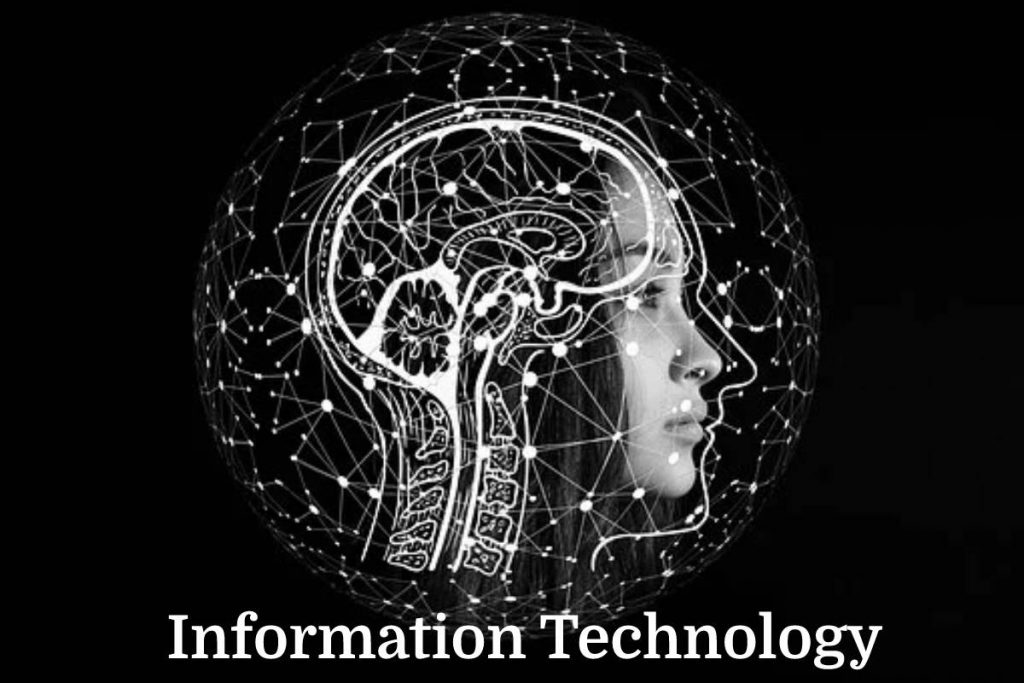Table of Contents
Information Technology Definition
Information technology (IT) uses computers to create, process, store and exchange all types of electronic data and information.
The concept of information technology refers to telecommunications equipment and computers (computers) for the transmission, processing, and storage of data. The idea covers specific issues in IT, electronics, and telecommunications.
The idea of information technology emerged in the middle of the 20th century. However, human beings already stored, processed, and transmitted information several millennia before Jesus Christ. These processes were very different from the current ones.
The Importance of Information Technology
Throughout history, the need to store and disseminate information has become increasingly important, and today these are fundamental questions for the development of human life. Many limitations of the early days of computing were overcome, such as device dimensions, processing speed, and memory volatility (early storage media could not retain data when interrupted), electricity supply, as well, as RAM). However, there are still many significant challenges with internet stability. One of the main ones is the abysmal differences between suppliers in developed and underdeveloped countries.
It makes the notion associated with computers, although it includes other devices such as televisions, phones, and tablets. Today, information technologies are essential in many fields, including leisure and interpersonal communications, from academia to work.
Information Technology in Business and Everyday life
Most businesses today are constantly using information technology. Take the case of a clothing store that has a website where it presents data about its products and, in addition, uses email to contact its customers and suppliers. In the establishment, a computer uses to record transactions and issue invoices to buyers. In addition, stock movements register on a computer.
Characteristics of Information Technology
- User operation in data manipulation mode (without programming) – The user does not have to know and remember but sees and acts.
- Transversal information held at all stages of information transmission, supported by an integrated database, provides a unique way to capture, search, display, update and protect data.
- Dematerialized processing of the document during which only the final version of the paper gets register – The intermediate versions and the necessary data recorded on the medium deliver to the user via the PC’s display screen.
- Interactive task solving mode (dialogue) with a wide range of possibilities of use
- Collective production of a document from a group of computers linked by message
- Adaptive dispensation of the form and modes of presentation of information in the problem-solving process
Types of Information Technology
The main types of information technology are as follows.
- Information technologies for data processing are to solve well-structured problems, the algorithms that are well known. And also, for which there are all the necessary input data. This technology applies to the performance level of low-skilled personnel to automate specific routines and constantly repeated operations of administrative work.
- Information technology management intends for the information service of all company employees linked to the acceptance of administrative decisions. In this case, the information is usually presented in regular or extraordinary management reports. And this contains information about the company’s past, present, and possible future.
- Automated office information technology is to complements the existing communication system of company personnel. Office mechanization involves the organization and support of communication processes both within the company and the external environment based on computer networks and other modern means of transferring and working with information.
- Information technologies for decision support develop a management decision resulting from an iterative process involving a decision support system (a computer link and the object management) and a person (the management link, which defines the input data, evaluates the result).
The computing of expert systems is on the use of artificial intelligence. Expert systems allow managers to receive expert advice on any problem that knowledge has accumulated in these systems.
